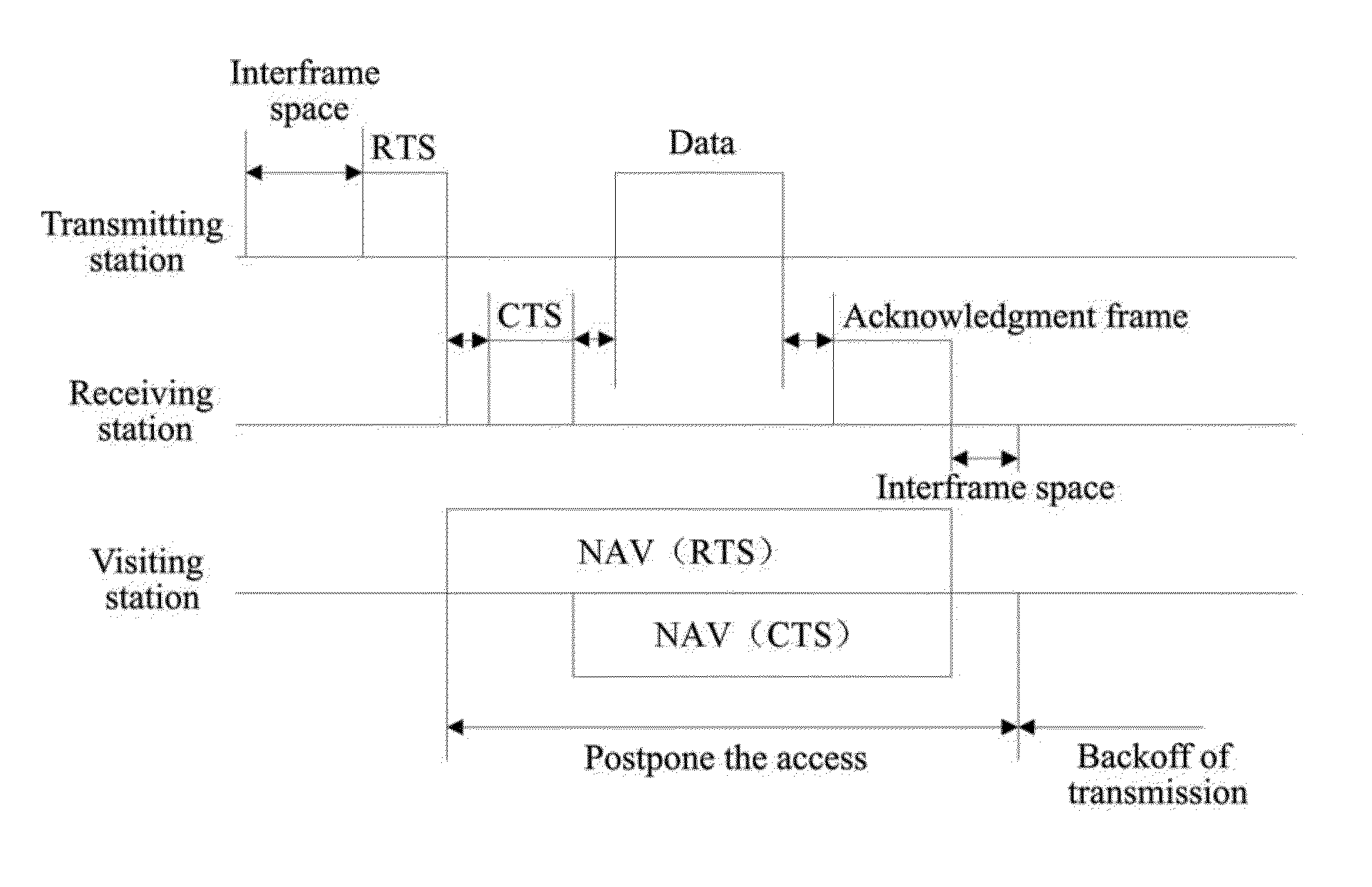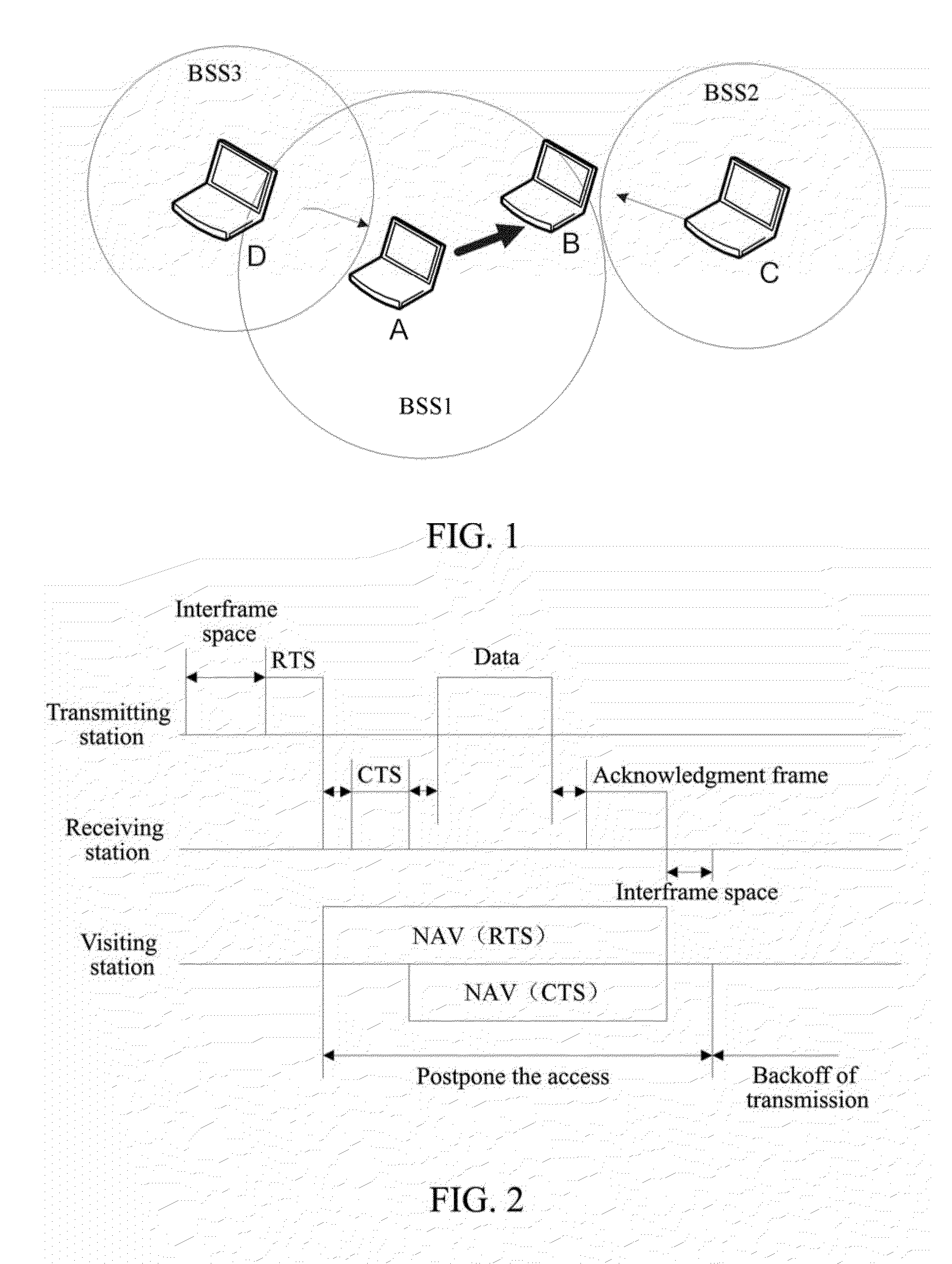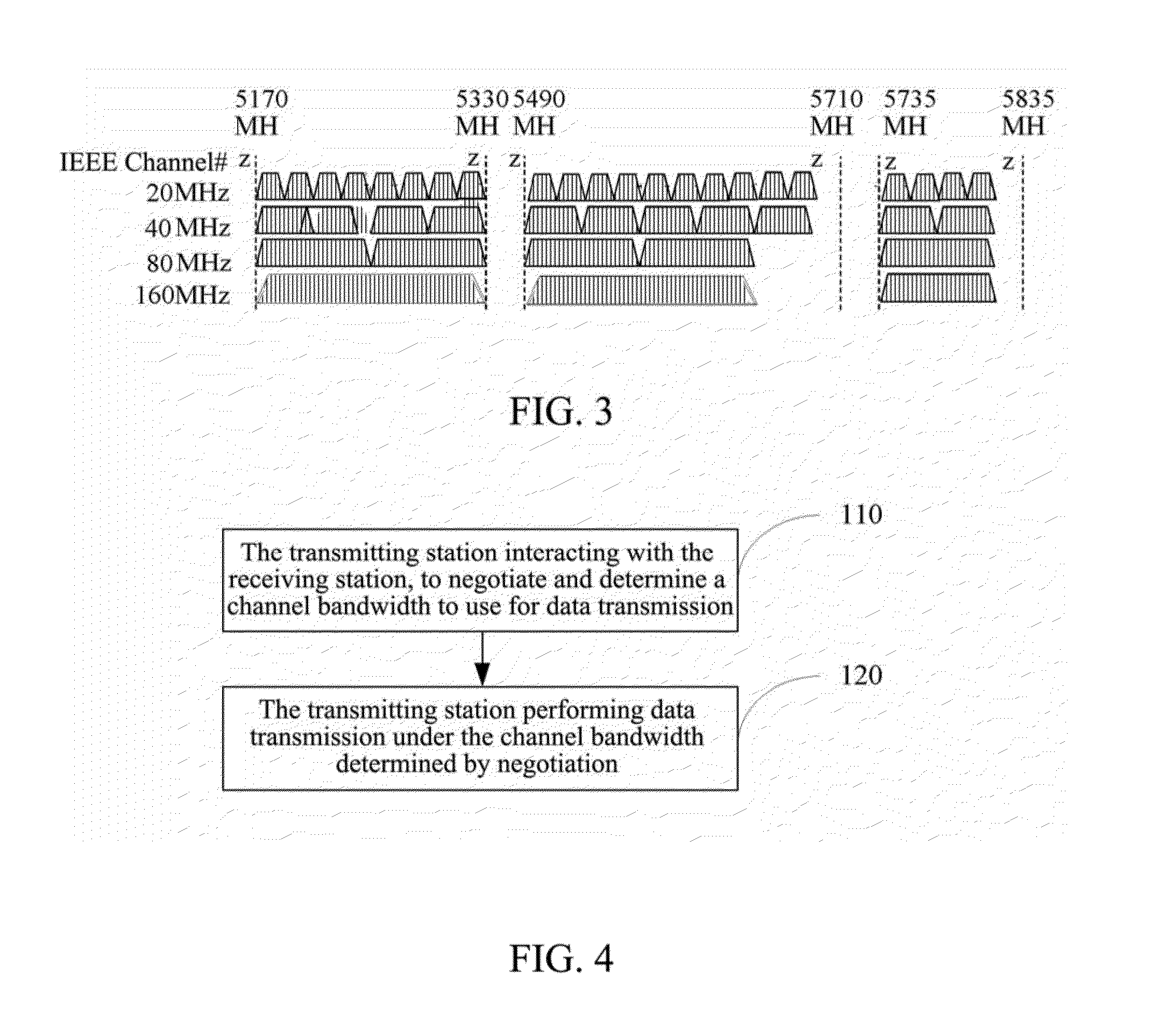Method and System for Channel Data Transmission in Wireless Network
a wireless network and wireless network technology, applied in the field of wireless network communication, can solve the problems of large bandwidth bss to use the maximum bandwidth for transmission, the difficulty of collision detection of the wireless environment, and the inability to detect the collision between the channel and the other, so as to increase the frequency spectrum utilization of large bandwidth, ensure the backward compatibility, and ensure the effect of transmission bandwidth
- Summary
- Abstract
- Description
- Claims
- Application Information
AI Technical Summary
Benefits of technology
Problems solved by technology
Method used
Image
Examples
application example one
[0092]The transmitting station (transmitting STA) currently supports working bandwidths of 160 / 120 / 80 / 40 / 20 Mhz, and the receiving station (receiving STA) currently supports working bandwidths of 80 / 40 / 20 MHz. Wherein, the bandwidth of 160M is comprised of two continuous or discontinuous bandwidths of 80M, each bandwith of 80M is comprised of two continuous bandwidths of 40M, and each bandwith of 40M is comprised of two continuous basic bandwidth channels of 20 MHz. The current maximum working bandwidth of the transmitting STA and the receiving STA is 80 MHz, and the maximum working bandwdith here refers to the capability of the channel bandwidth supported by the transmitting STA and the receiving STA respectively.
[0093]The transmitting STA performs channel detection by a Clear Channel Assessment (CCA) method on each channel of 20 MHz on the current maximum working bandwidth before transmitting a channel subscription Request to send (RTS). On the first channel, after an Arbitration ...
application example two
[0102]The transmitting station (transmitting STA) currently supports working bandwidths of 160 / 120 / 80 / 40 / 20 Mhz, and the receiving station (receiving STA) currently supports working bandwidths of 80 / 40 / 20 MHz. Wherein, the bandwidth of 160M is comprised of two continuous or discontinuous bandwidths of 80M, each bandwith of 80M is comprised of two continuous bandwidths of 40M, and each bandwith of 40M is comprised of two continuous basic bandwidth channels of 20 MHz. The current maximum working bandwidth of the transmitting STA and the receiving STA is 80 MHz.
[0103]The transmitting STA performs channel detection by a CCA method on each 20 MHz channel on the current maximum working bandwidth before transmitting a channel subscription Request to send (RTS), on the first channel, after an AIFS and backoff, if it is determined that the first channel is idle, prepares to trasnmit the RTS, and meanwhile, on the second, third and fourth channels, if it is determined that the second, third a...
embodiment three
[0112]The transmitting STA performs channel detection by CCA on each channel of 20 MHz on the current maximum working bandwidth before transmitting a channel subscription Request to send (RTS), if it is determined that the channels of 20M which are idle currently are the first, second, third and fourth channels, transmits a channel subscription Request to send (RTS) to the receiving STA respectively on one or more channels (equal to or less than four idle channels) including the first channel on the detected four idle channels of 20 MHz.
[0113]The RTS transmitted by transmitting STA carries indication information of available channels, which is used to indicate channel bandwidth information to use by the transmitting STA to trasnmit the RTS (or indicate the available channel bandwidth information of the transmitting STA); and the indication information of available channels includes channel serial numbers and / or available maximum bandwidth etc.
[0114]If the receiving STA receives and ...
PUM
 Login to View More
Login to View More Abstract
Description
Claims
Application Information
 Login to View More
Login to View More - R&D
- Intellectual Property
- Life Sciences
- Materials
- Tech Scout
- Unparalleled Data Quality
- Higher Quality Content
- 60% Fewer Hallucinations
Browse by: Latest US Patents, China's latest patents, Technical Efficacy Thesaurus, Application Domain, Technology Topic, Popular Technical Reports.
© 2025 PatSnap. All rights reserved.Legal|Privacy policy|Modern Slavery Act Transparency Statement|Sitemap|About US| Contact US: help@patsnap.com



